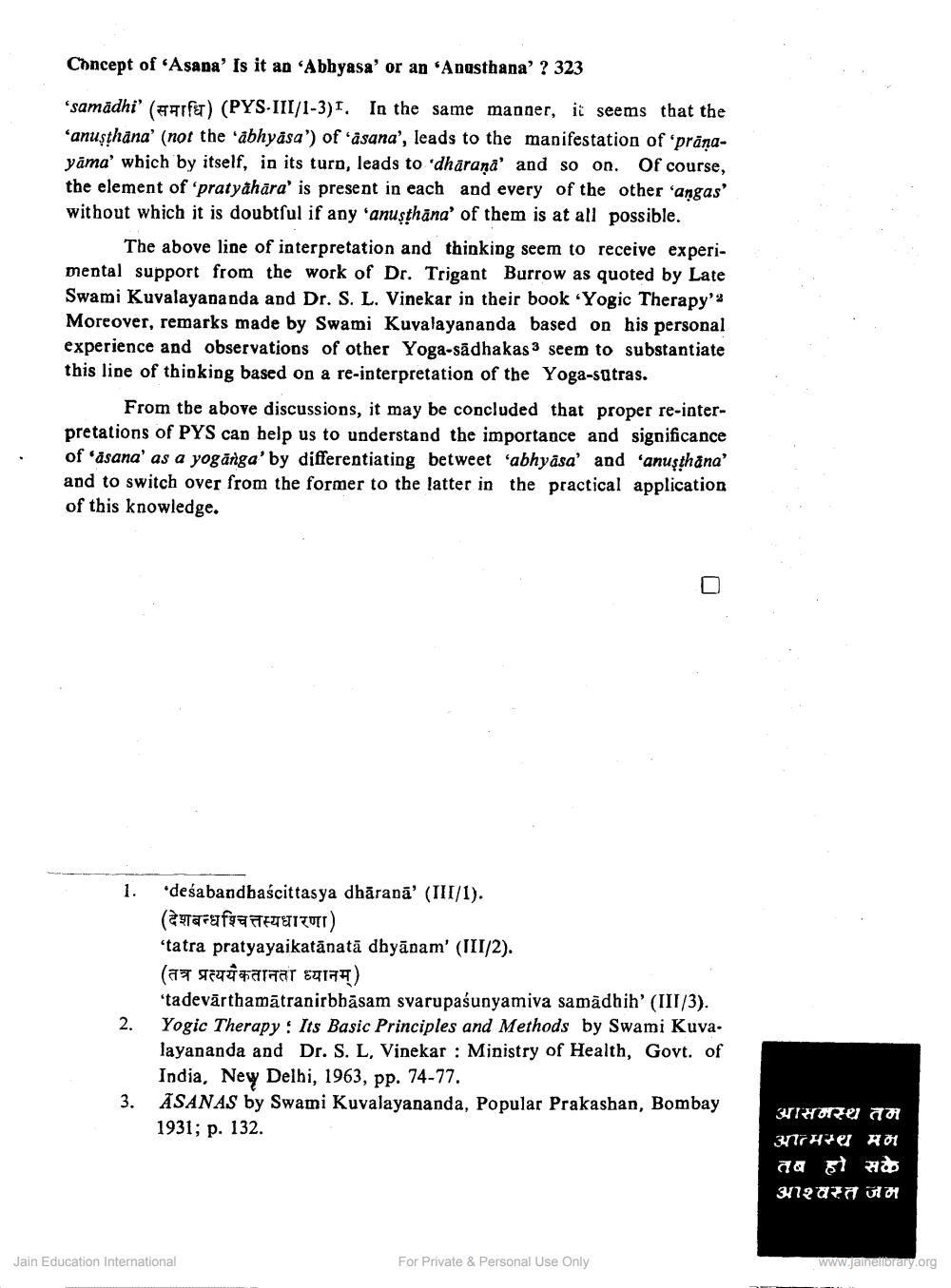Book Title: Concept on Asana Is it Abhbyasa or Anusthana Author(s): B R Sharma, T P Sreekumaran, M V Bhole Publisher: Z_Umravkunvarji_Diksha_Swarna_Jayanti_Smruti_Granth_012035.pdf View full book textPage 6
________________ Concept of "Asana' Is it an "Abhyasa' or an 'Anasthana'? 323 'samadhi' (Farfe) (PYS-III/1-3). In the same manner, it seems that the 'anusthana' (not the abhyasa') of asana', leads to the manifestation of 'pranayama' which by itself, in its turn, leads to 'dharana' and so on. Of course, the element of pratyahara' is present in each and every of the other 'angas' without which it is doubtful if any 'anusthana' of them is at all possible. The above line of interpretation and thinking seem to receive experimental support from the work of Dr. Trigant Burrow as quoted by Late Swami Kuvalayananda and Dr. S. L. Vinekar in their book Yogic Therapy's Moreover, remarks made by Swami Kuvalayananda based on his personal experience and observations of other Yoga-sadhakas 3 seem to substantiate this line of thinking based on a re-interpretation of the Yoga-satras. From the above discussions, it may be concluded that proper re-interpretations of PYS can belp us to understand the importance and significance of asana' as a yoganga' by differentiating betweet abhyasa' and 'anusthana' and to switch over from the former to the latter in the practical application of this knowledge. 1. desabandbascittasya dbarana' (III/1). (देशबन्धश्चित्तस्यधारणा) 'tatra pratyayaikatanata dhyanam' (III/2). (az utaangat $414) 'tadevarthamatranirbhasam svarupasunyamiva samadhih' (III/3). 2. Yogic Therapy : Its Basic Principles and Methods by Swami Kuva layananda and Dr. S. L, Vinekar : Ministry of Health, Govt. of India, New Delhi, 1963, pp. 74-77. 3. ASANAS by Swami Kuvalayananda, Popular Prakashan, Bombay 1931; p. 132. आसमस्थ तम 3rHTU AH तब हो सके 3779aza utot Jain Education International For Private & Personal Use Only www.jainelibrary.orgPage Navigation
1 ... 4 5 6
